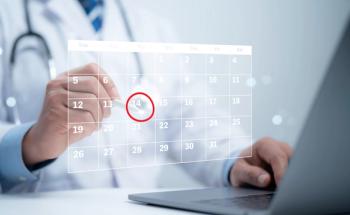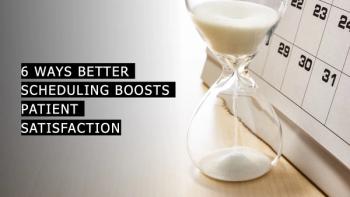
From Employment to Micropractice
Why one doctor transitioned, how she did it, and how it is paying off.
In this era of declining reimbursement, increasing regulatory burdens, and healthcare reform initiatives that favor integrated systems, opening a solo practice might sound like a recipe for failure. But some physicians aren't ready to give up on the traditional practice model just yet. And they're finding new ways to be successful doing it.
One is Linda Lee, a family physician in Rochester, N.Y. About a decade ago, Lee, who was working in a practice group owned by a large hospital system, decided to cut ties. "I just got tired of the hamster-wheel type of practice of medicine; the assembly line," says Lee. "Basically you have to see a patient every 10 to 15 minutes, sometimes 30 patients in a day, and you really don't have much say in what you would like to do, and you couldn't really focus much on preventative medicine and get to know your patients."
Lee knew that venturing out on her own would help her better connect with patients, but she also knew it would be a financial challenge. So rather than simply forming a solo practice, she formed a micropractice, a model in which physicians (typically in solo practice) focus on maximizing revenue by operating with no staff members (or very few staff members), finding low-cost office space (often by sharing with other physician practices), and improving efficiencies by relying heavily on technology. "I really feel like I’m practicing medicine the way I envisioned ... that it would be like when I first decided to go into family medicine," she says of her transition. "I feel like I'm taking very good care of my patients, and to me that's the most important thing - that I make a difference in their lives."
Here's more information about Lee's transition to micropractice, and how it is changing her practice style, her patients, and her revenue.
The transition
Family physician Gordon Moore is often credited with pioneering the micropractice model. In fact, he played a leading role in Lee's transition. She first heard about the model while reading a magazine article profiling Moore, and when she realized he was also located in Rochester, she reached out to him directly.
He became her mentor, assisting her with the transition, and even helping her find a practice location (she rents a room in the same ophthalmology office where Moore rented a room for his practice). "He helped me a lot in the beginning, deciding which [EHR] to use, what software, how to do the billing," says Lee, who now provides advice to other physicians interested in transitioning. "I just modeled it after him and it worked out great."
Like Lee, physicians who embrace the micropractice model tend to seek out inexpensive office locations, employ as few staff members as possible, and instead depend on technology to help with medical documentation and administrative duties. "Basically you do everything yourself," says Lee. "You don't have a nurse, you don't have a secretary, it's low overhead, and because it's low overhead, you're able to spend more time with patients."
The new responsibilities
For many physicians, the new responsibilities associated with running a micropractice may be overwhelming - at least at the outset. As Lee noted, physicians who form successful micropractices tend to do everything themselves, including the billing, practice management, nursing, and call time.
"It's more work that maybe some physicians wouldn't like to do," says Lee. "For me, I have no problem doing my own billing because I kind of like to know or to have control over what ... claims go out and making sure that I am getting paid for what I bill for." Lee says she struggled a bit more with the administrative tasks, such as scanning lab results into the EHR. As her practice grew, she eventually hired a part-time secretary to help her keep up.
Since she practices solo, Lee, who provides patients with her cell phone number, is also the on-call physician 24/7. While this worried her at first, she says she was pleasantly surprised by the low volume of calls she receives after hours. "I rarely get woken up in the middle of the night because patients really respect your time," she says.
The new technology
Another reason Lee receives fewer cell phone calls than one might think: her patient portal. Patients use the portal to schedule appointments online, and to send her questions and messages. "It's very convenient in the middle of the night," says Lee. "If they don't feel good they can go online and schedule an appointment for the next morning."
Lee also uses the portal to conduct e-visits, in which patients fill out a form listing their symptoms, allergies, pharmacy number, and so on. If Lee finds that the patient has a straightforward problem, such as a sinus infection, she comes up with a treatment plan without having the patient come in to the office for a face-to-face visit.
The portal is not the only technology Lee relies on to keep her practice running smoothly. She also uses electronic billing and an EHR. "If I didn’t have the technology like an [EHR], I probably wouldn’t be able to do this type of practice," she says.
The new financial outlook
So how are all these changes affecting Lee's finances? She makes less money in the micro model than she made as an employed physician, but she says she's perfectly happy to keep it that way. "The reason why I make less is because I see [fewer] patients," she says. In fact, Lee allots 30 minutes to all patient visits, and 60 minutes to all physicals. "It's nice to be able to make your own decision about how busy you want to be, what's best for your practice, what's best for yourself, what's best for your patients," she says.
Lee also limits the number of new patients she accepts to ensure patient access remains strong. That also means she has more control over her patient population. Currently, she only accepts new patients with whom she can focus more on lifestyle weight-management issues. "I've helped so many patients lose weight and reverse medical conditions," says Lee. "I love being able to take a focus that I'm very passionate about."
Key advice for physicians considering a micropractice
Start small and then build. That's one of the biggest pieces of advice family physician Linda Lee would share with other doctors that are considering forming micropractices.
"One mistake doctors make is they rent these huge beautiful office spaces," says Lee. "Start off small and then as you expand you can find a bigger place or a nicer place, that type of thing."
The same advice applies to staffing, says Lee. Start off on your own, and then add as you grow.
Better balance
Seeking work-life balance? Perhaps it's time to rethink going solo. Family physician Linda Lee formed a solo micropractice about 10 years ago. The new practice, she says, allows her to spend more time with her three children. "I basically could schedule my day around my kids' schedules," says Lee. "I would put them on the bus in the morning and then go into work and then see patients until I had to go pick them up. I could really flex my schedule around family and things like that, and you can work as much or as little as you want."
Eight ways to boost efficiencies
The micropractice model of practicing medicine focuses on maximizing revenue by operating with no or very few staff members and by using technology to fill in the gaps. While the model isn't right for all physicians, there are some efficiency improvement lessons it can provide all types of practices.
To identify them, we asked family physician Gordon Moore, who is often credited with pioneering the micropractice model, to weigh in. Visit
Aubrey Westgate is senior editor at Physicians Practice. She can be reached at aubrey.westgate@ubm.com.
This article originally appeared in the March 2014 issue of Physicians Practice.
Newsletter
Optimize your practice with the Physicians Practice newsletter, offering management pearls, leadership tips, and business strategies tailored for practice administrators and physicians of any specialty.









